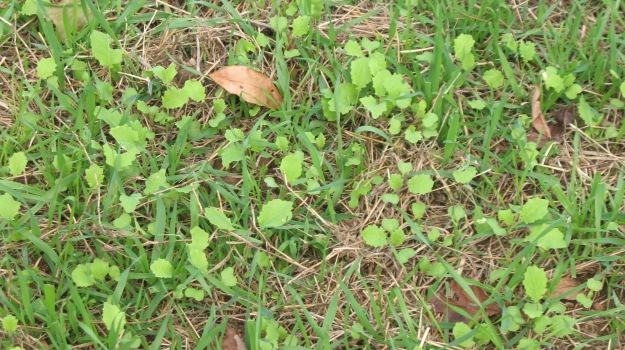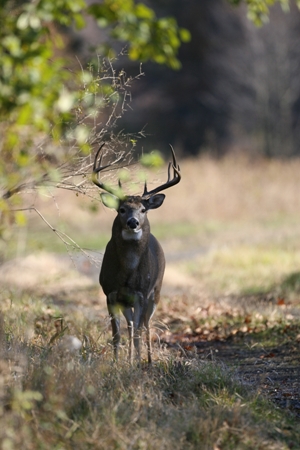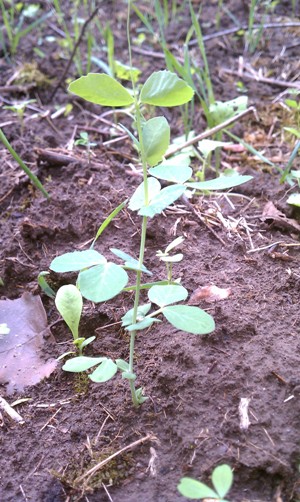
We’re Just Scratching the Surface
By Todd Triplett
It’s no secret that the modern deer hunter has it made when it comes to technology, available biological knowledge, and a host of other assets. Many of these resources were born out of necessity and others out of experience. No matter the reason for the innovation, the fact is, hunters of today are blessed with all sorts of “tricks” that make hunting in general, and especially deer hunting, better and more efficient. The opportunity to increase the quality and quantity of the game we hunt is available for most anyone with the desire. All you need is the knowledge and desire and put forth a bit of effort.
Some may argue that the ability to increase the quality of the deer herd is limited to those with an abundance of expendable income, large pieces of property and heavy equipment to complete the chore. No doubt, all these extras help tremendously, but anyone with the determination to improve the quality of hunting on any ground, regardless of equipment availability or the size of the property, can do so.
No-Till to the Rescue
 Recent years have seen offerings from seed companies that specialize in optimum plant growth with very select varieties that deer prefer. These contributions have been scientifically formulated to provide both bucks and does with appropriate nutrients that will allow them to reach their full potential.
Recent years have seen offerings from seed companies that specialize in optimum plant growth with very select varieties that deer prefer. These contributions have been scientifically formulated to provide both bucks and does with appropriate nutrients that will allow them to reach their full potential.
Attention has also been drawn to the individual hunter who has little of the aforementioned equipment or abundance of property. So with the help of science, some of these companies have produced what some dub as “no-till” products. Let’s face it the “average Joe-hunter” most likely has a limited amount of time as well as finances, so some must do the best we can with what we have.
On the surface the no-till products seem like a gift from above. Thoughts of simply casting a few handfuls of seeds that will grow a plot of lush forage for the local deer herd or turkey flock is very attractive to those without the tools to emplace a formal food plot. Then, as our thoughts misconstrue, we simply sit back and wait for our offerings to pop out of the ground and huge-antlered trophies from far and wide eagerly partake. Sounds easy enough, huh?
Unfortunately many sportsmen have thought of these products that tout the ease of producing a food plot in out of the way places or with minimum equipment as the perfect answer for their situation. Essentially, they are correct, but only of their intended end result, not of the path necessary to obtain their goal. Do not misconstrue any “no-till” seed product as a planting that requires zero effort and will tender unconditional growth potential.
In the past I have spoke with others about the accolades of “no-till” plantings and must admit that the responses received were less than stellar. Actually the reported results varied from less than hoped for, to downright terrible. On the surface it may seem as though these offerings hold no merit as a quality tool in reaching a QDM goal. However when we dig a bit deeper we find that the downfall of the majority of these past attempts were fraught with shortcomings from the individual - rather than the seed formulations themselves. As a matter of fact, ask anyone who has first-hand experience with any no-till type seed formulation that has encountered very poor results and I would bet a dollar to a donut, if they are honest about it, their input was minimal at best.
If you’re planting one of these “no-till” plots it likely means you either don’t have the equipment or you can’t get equipment to the proposed planting location. Many of the people trying these products are new to the experience and the thought of being able to cut corners is appealing. The problem being, the more corners you cut, the more you sacrifice yield, palatability and attraction to a point…then total failure befalls you. It is possible to plant a no-till plot; however, you must educate yourself to proper planting techniques, follow the instructions and put in the required amount of work as if you were planting vast acreage with big equipment.
Ingredients for Success
Fact is, the old adage, “there is no free lunch,” couldn’t be truer for those whose goal is a flourishing food plot. To find the appropriate procedure for achieving the perfect food plot in a wooded area or without heavy equipment, I contacted Austin Delano, a BioLogic representative who helps people across the country achieve the best results possible when managing their deer herd.
Though Biologic doesn’t actually have any product simply dubbed “no-till,” (they actually have several that will work in this circumstance) Delano quickly pointed out that Biologic’s “Hot Spot” is ideal for those who need a product to fill this niche. “Hot Spot” is a blend of wheat, winter peas and buckwheat. This blend provides quick growth, which may help overcome initial overgrazing by the local deer herd that will undoubtedly be attracted to any new, palatable plant growth. This blend was formulated for its heartiness in minimal light (as little as four hours per day) and the small seed size easily falls into any available small crevice that may be encountered when planting with limited equipment. It will also do well in less than desirable soil and lower soil pH than most other blends. It’s simple - Hot Spot will grow where other blends won’t.
The whole idea of a no-till plot is “we’re excluding an important step” in the planting process, so we want to make sure we complete the other vital steps. Really this can be accomplished in three trips to the site over a period of two or three weeks. On the first trip you’ll want to take a soil test and kill the existing vegetation with your herbicide. Or, in cases where there is significant existing grass or weed growth in the plot, mow instead of spraying at this time.
 If you mow you will need to give the unwanted plants at least three days to rebound from being shocked into dormancy by mowing. If that’s the case, on the second trip now the targeted plants will be able to suck the herbicide into their root system for a complete kill, so on your second trip three days to a week later, now you can apply your complete burn-down, contact herbicide. When most will be planting blends like Hot Spot the cycle of summer weeds should be over; however, killing all existing plant competition with a non-selective herbicide like RoundUp is still wise.
If you mow you will need to give the unwanted plants at least three days to rebound from being shocked into dormancy by mowing. If that’s the case, on the second trip now the targeted plants will be able to suck the herbicide into their root system for a complete kill, so on your second trip three days to a week later, now you can apply your complete burn-down, contact herbicide. When most will be planting blends like Hot Spot the cycle of summer weeds should be over; however, killing all existing plant competition with a non-selective herbicide like RoundUp is still wise.
You will also need to feed your plants. Lime and fertilizer are an important part of a no-till plot just as they are with cash-crop farming. This becomes more difficult in soils with a low pH and why a soil test is important. The acidic soil binds nutrients making them unavailable to your food plot crops. So learn this information ahead of planting by testing the soil and fertilize accordingly.
Ten days to two weeks later you should be able to work the soil, plant and apply fertilizer all on the same trip. Make sure the seeds make good contact with the soil. You cannot broadcast your seeds onto a bunch of matted-down leaves or conifer needles and expect a food plot to grow. At the very least, rake the site before to give the seeds something to “hang on to,” and then rake again after broadcasting to ensure proper coverage and soil contact. From that point it’s all up to Mother Nature and your deer herd.
The End Result
A prime time for planting a fall/winter plot is from mid-July through mid-September. Exactly when you want the plot to peak will dictate exactly when it should be planted. Obviously the earlier a plot is put into place the earlier it will peak, but earlier may not always be better. It may simply depend on a particular need or situation. The further north you go, the shorter your window when planting late summer/fall crops. You want to plant early enough so that you get significant yield before cold temperatures shut things down, but you want to plant late enough so that the palatability timeframe extends into the season as long as possible.
Now with a full realization that nothing comes easy, all that is needed is to lace up your boots, gather any necessary tools and begin preparations for this fall. This may take a couple outings or more to prep a chosen area properly, but do it confidently, knowing that whatever is sown shall certainly be reaped and a small out of the way food plot is certainly no exception. Just remember, with appropriate preparation planting during this time period and in these small out of the way plots is a proven method for harvesting mature bucks.
Buck photo: Jameseric | dreamstime.com



























